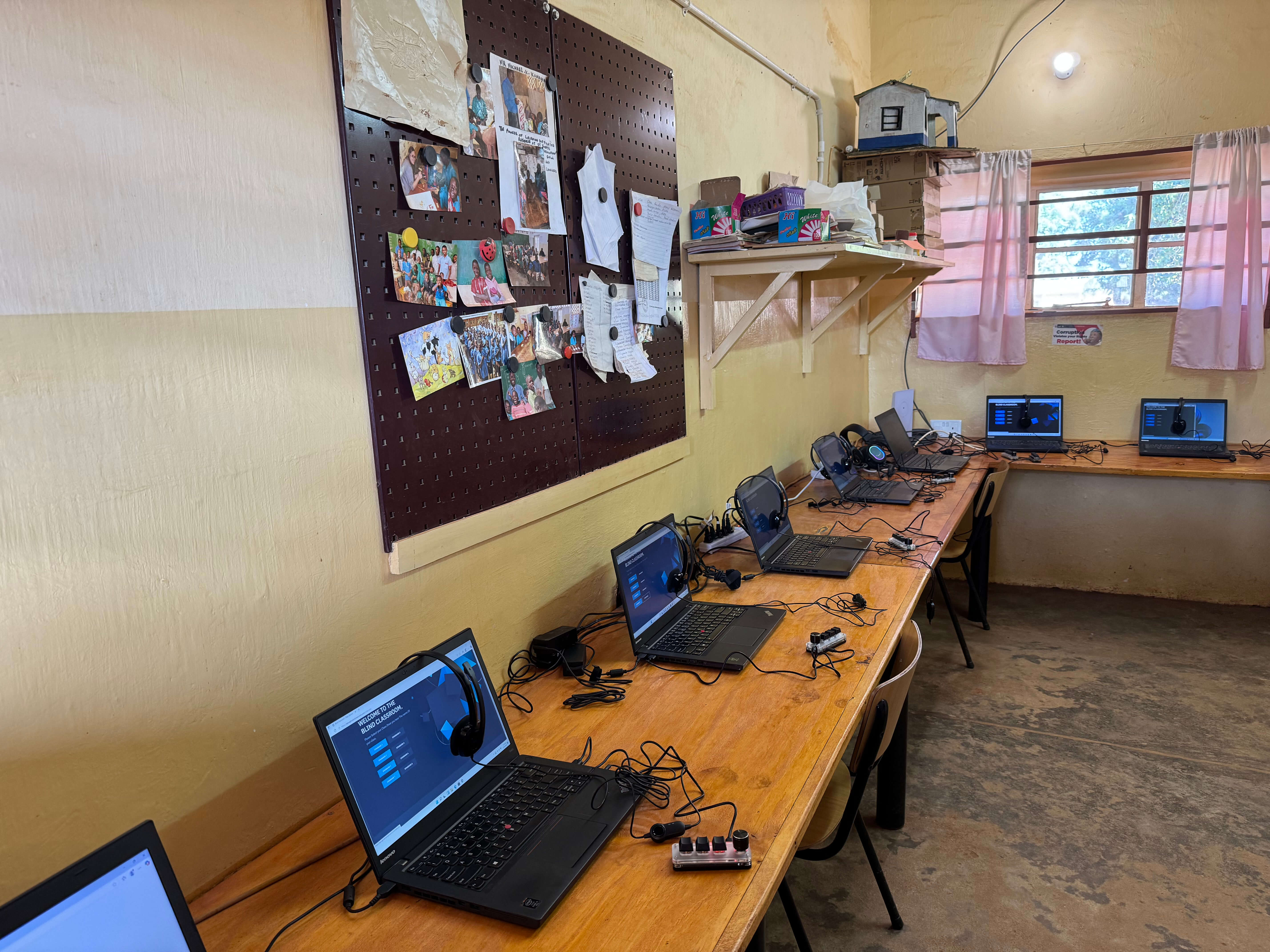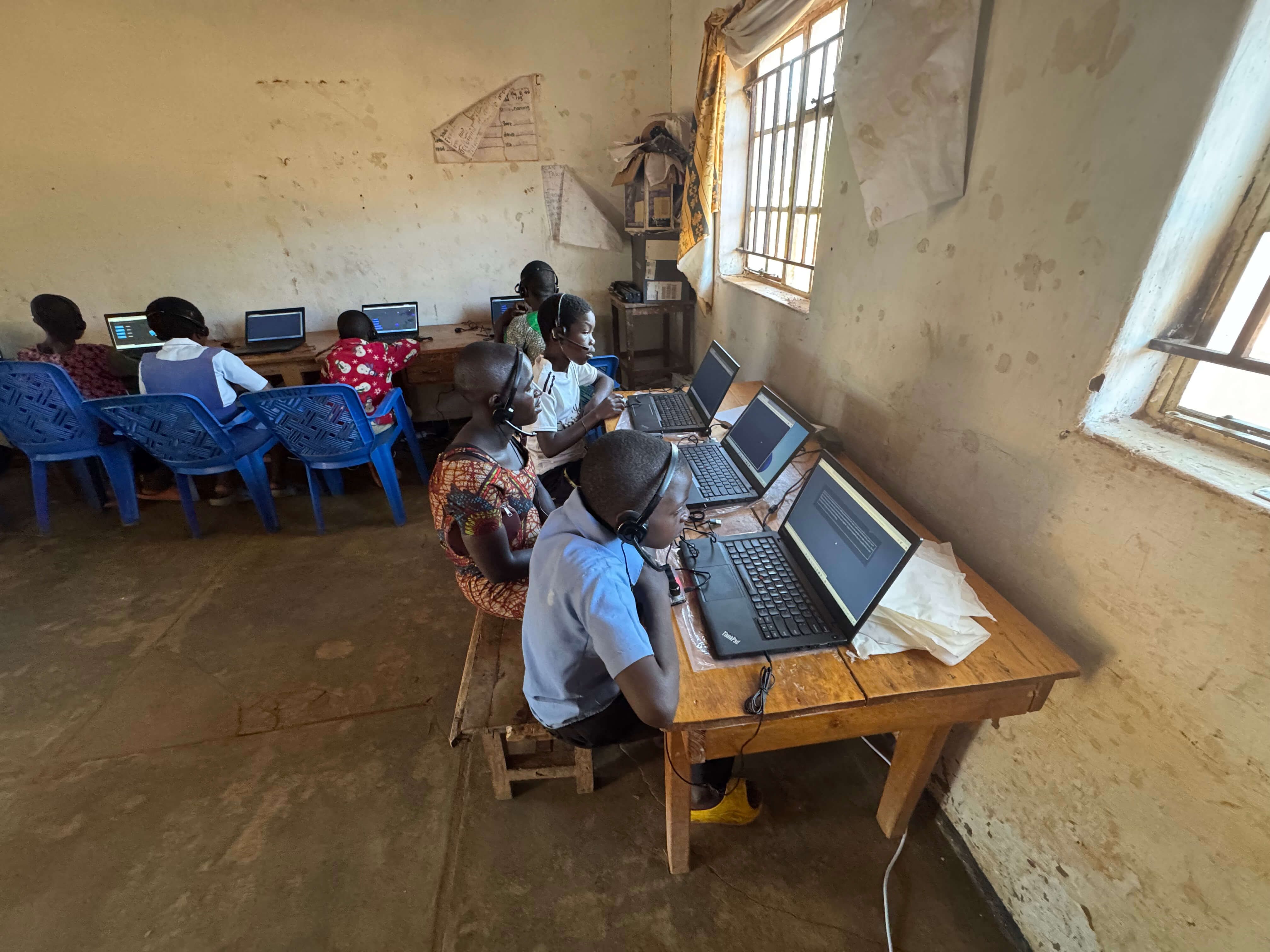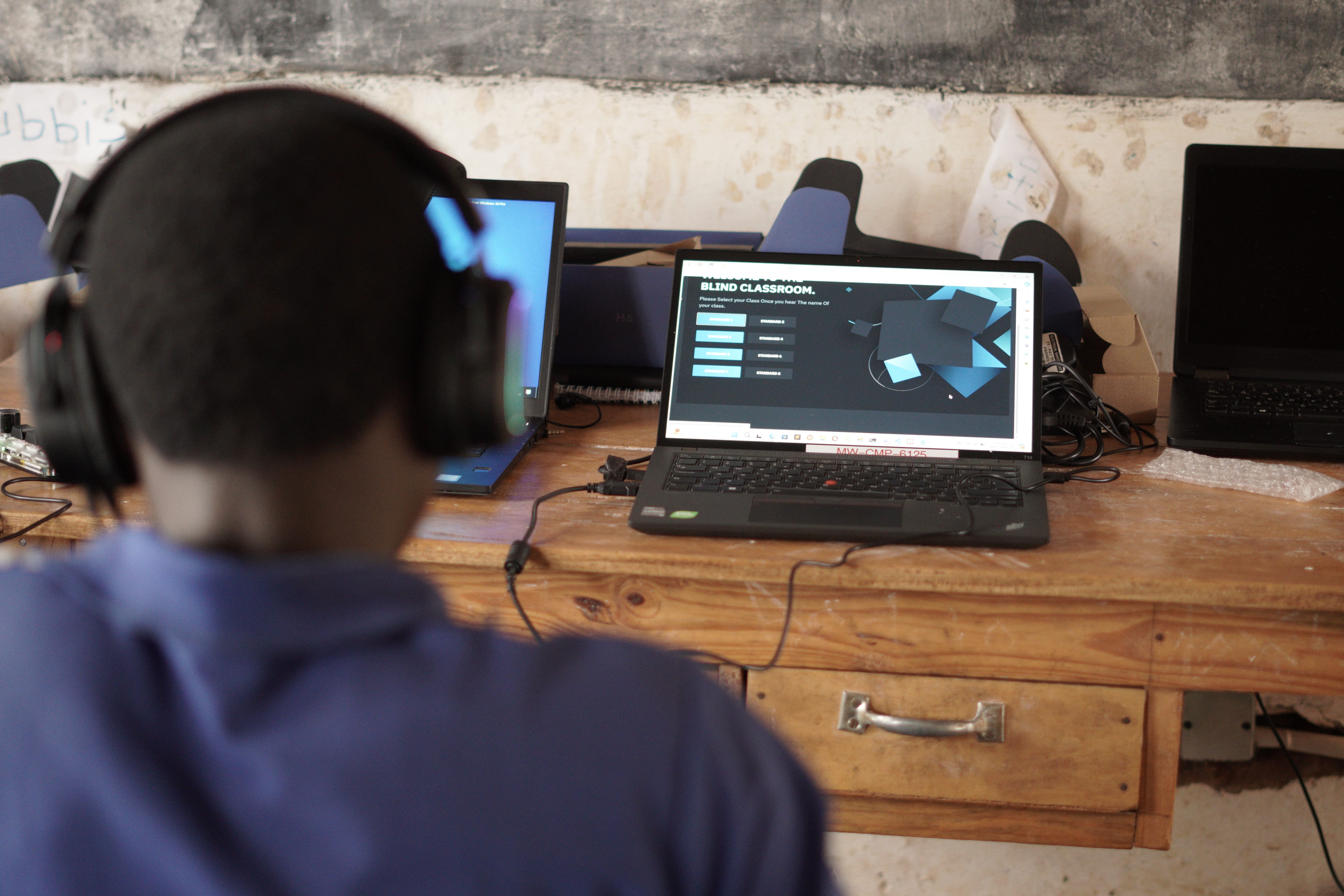In Malawi, there are over 800,000 people with visual impairments, yet only 50,964 are enrolled in schools — 25,396 male and 25,568 female. The majority of blind and visually impaired learners face significant barriers to accessing quality education. These include a shortage of trained special needs teachers, lack of accessible learning materials, reliance on printed content, and minimal use of inclusive technology in classrooms. As a result, learners are often left behind, unable to participate meaningfully in the education system.
The Blind Classroom is an innovative, AI-powered and voice-controlled learning system developed by Access Ability Africa Limited. It provides audio-based, curriculum-aligned lessons designed specifically for blind and visually impaired learners. Through voice interaction, students can navigate content, ask questions, and receive real-time feedback from an inbuilt AI “teacher,” enabling independent and personalized learning.
By replacing the need for printed materials and Braille dependency, The Blind Classroom empowers learners to engage with lessons using only their voice. The system supports real-time spoken instruction, responds to voice commands, explains and rephrases concepts, and adjusts to each learner’s pace and understanding. It directly tackles the lack of accessible teaching resources and special education teachers, while being customizable to align with any national curriculum. The innovation promotes inclusion, digital literacy, and equitable learning opportunities for learners with visual impairments.
The Blind Classroom has already been deployed in 2 schools: Chilanga School for the Blind in Kasungu and St. Joseph Resource Centre in Dedza. As part of Phase 1 scaling, the initiative aims to install 140 systems across 14 inclusive schools in Malawi. So far, 20 systems have been installed, and an additional 70 systems are ready — bringing the total prepared units to 90 systems. The innovation is being rolled out in collaboration with Save the Children International, the Muuni Fund of MACRA, and the Ministry of Education (Inclusive Education Department).





Contact Innovator
Message will be sent innovator and will reply to you via your email